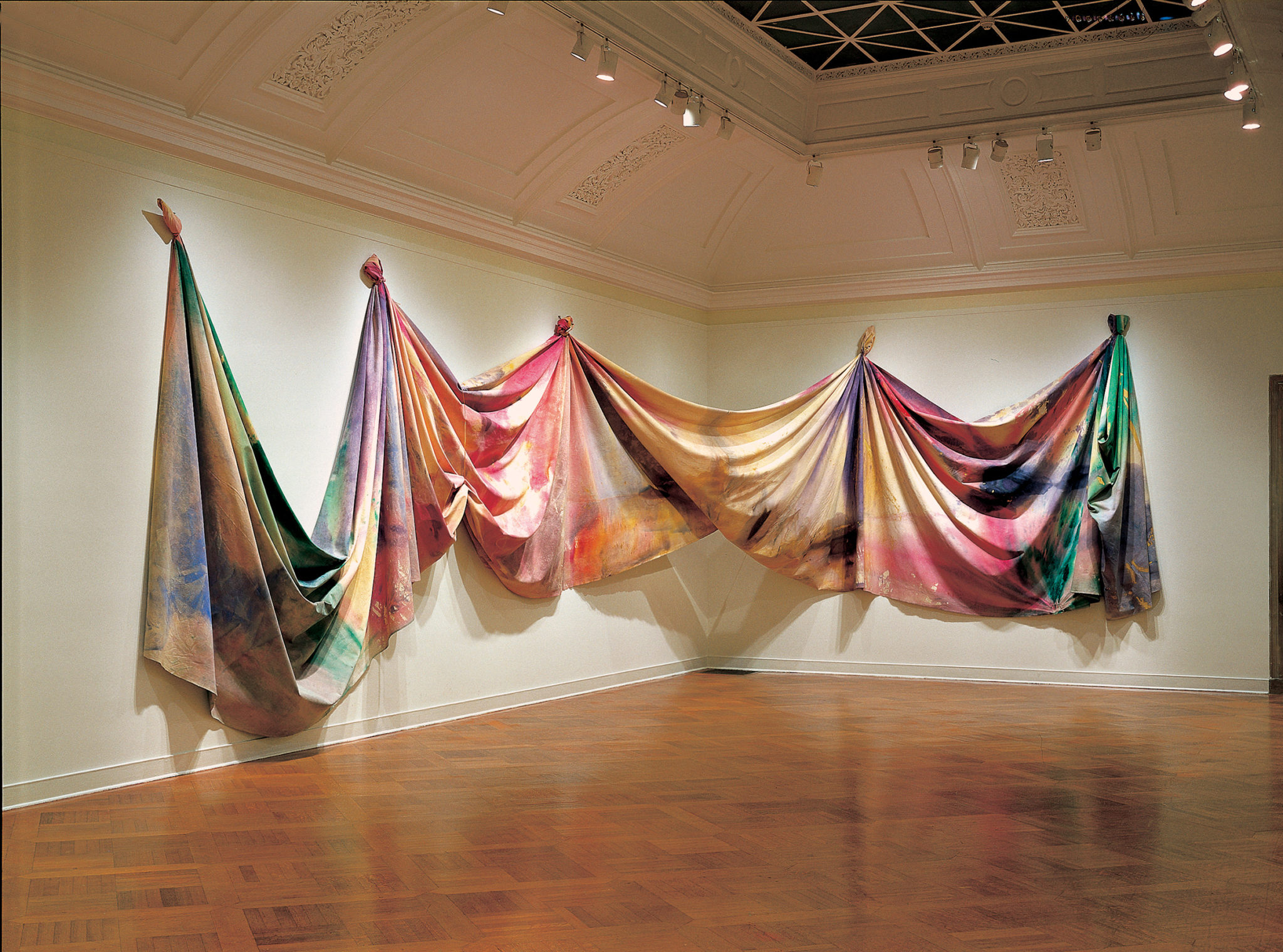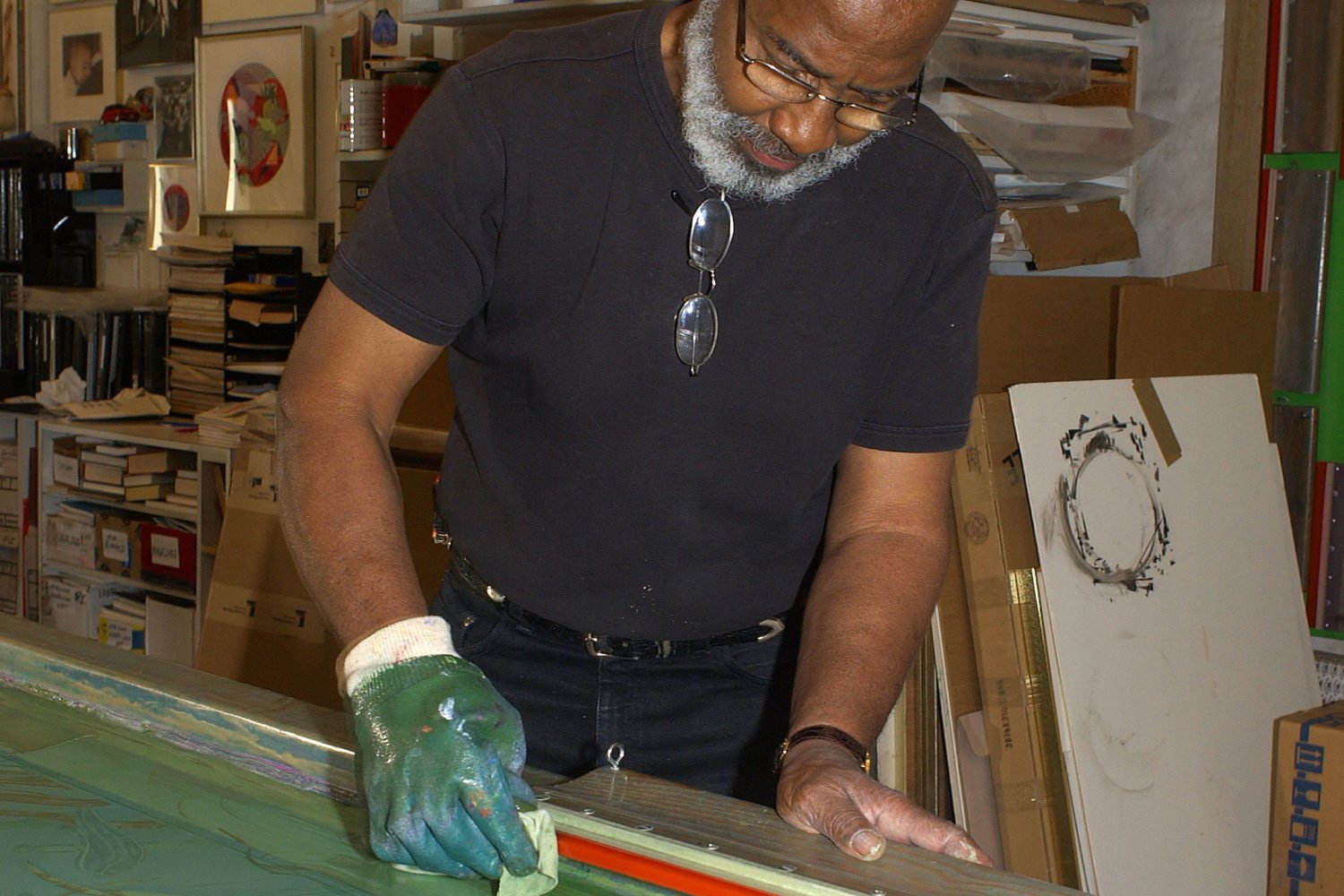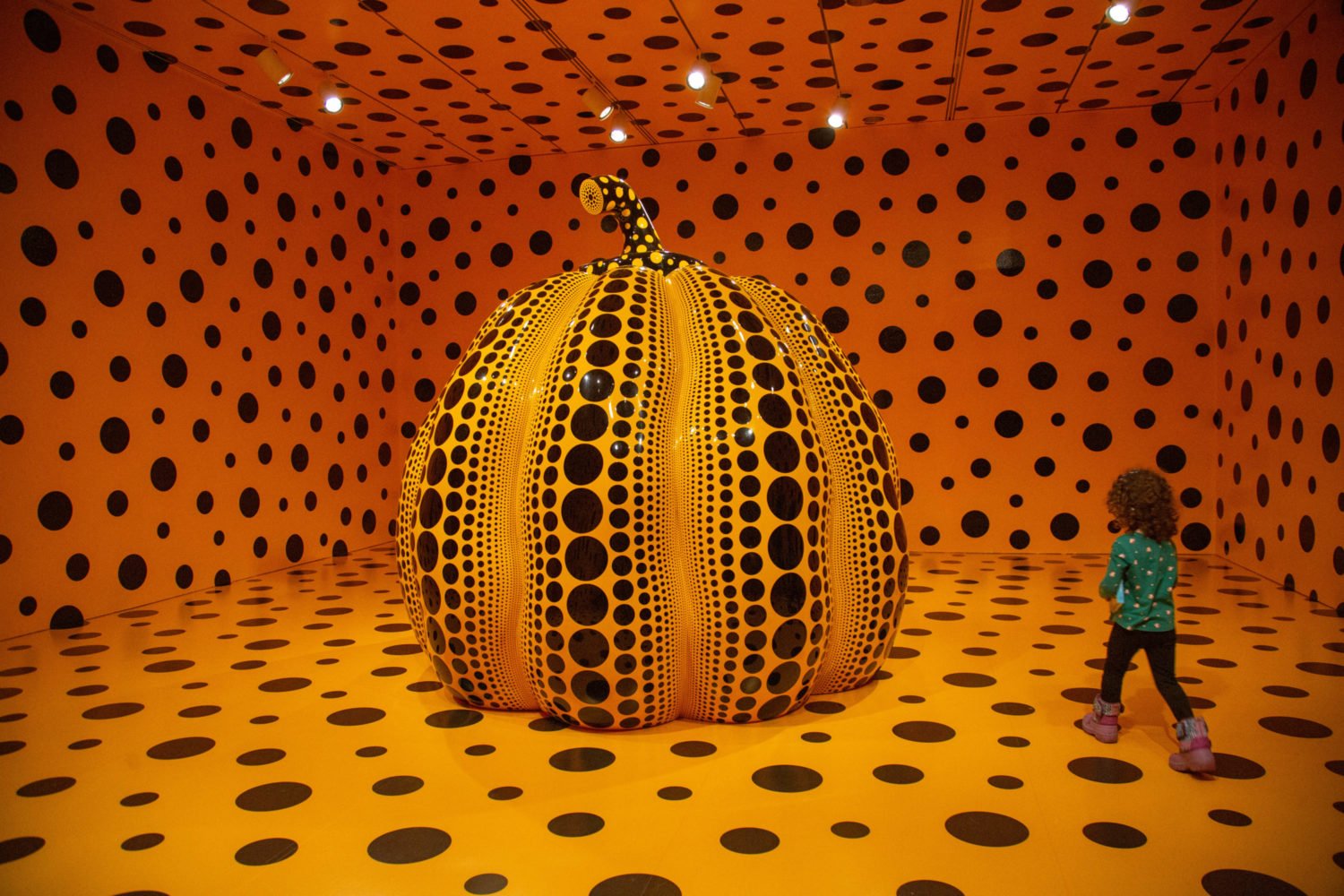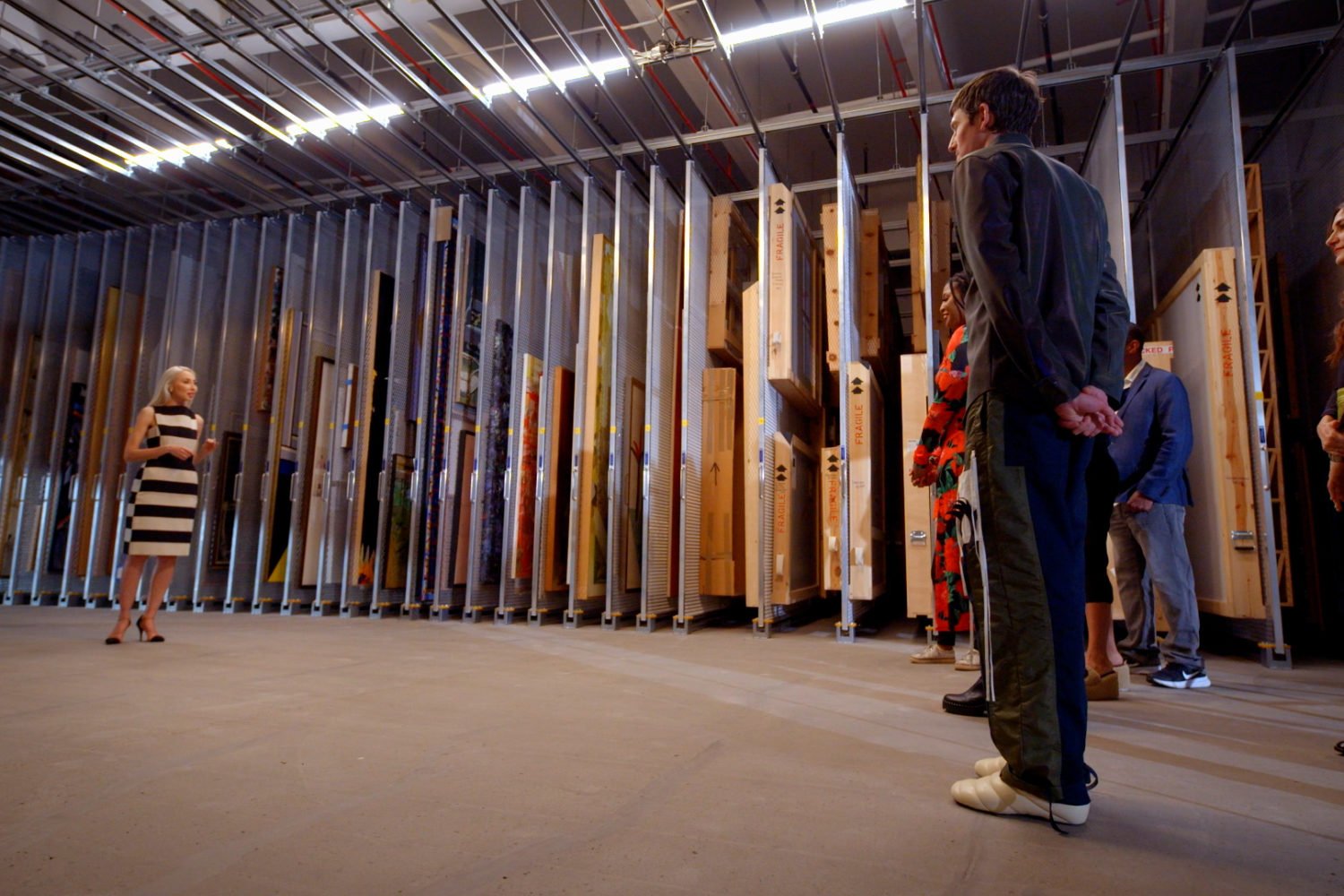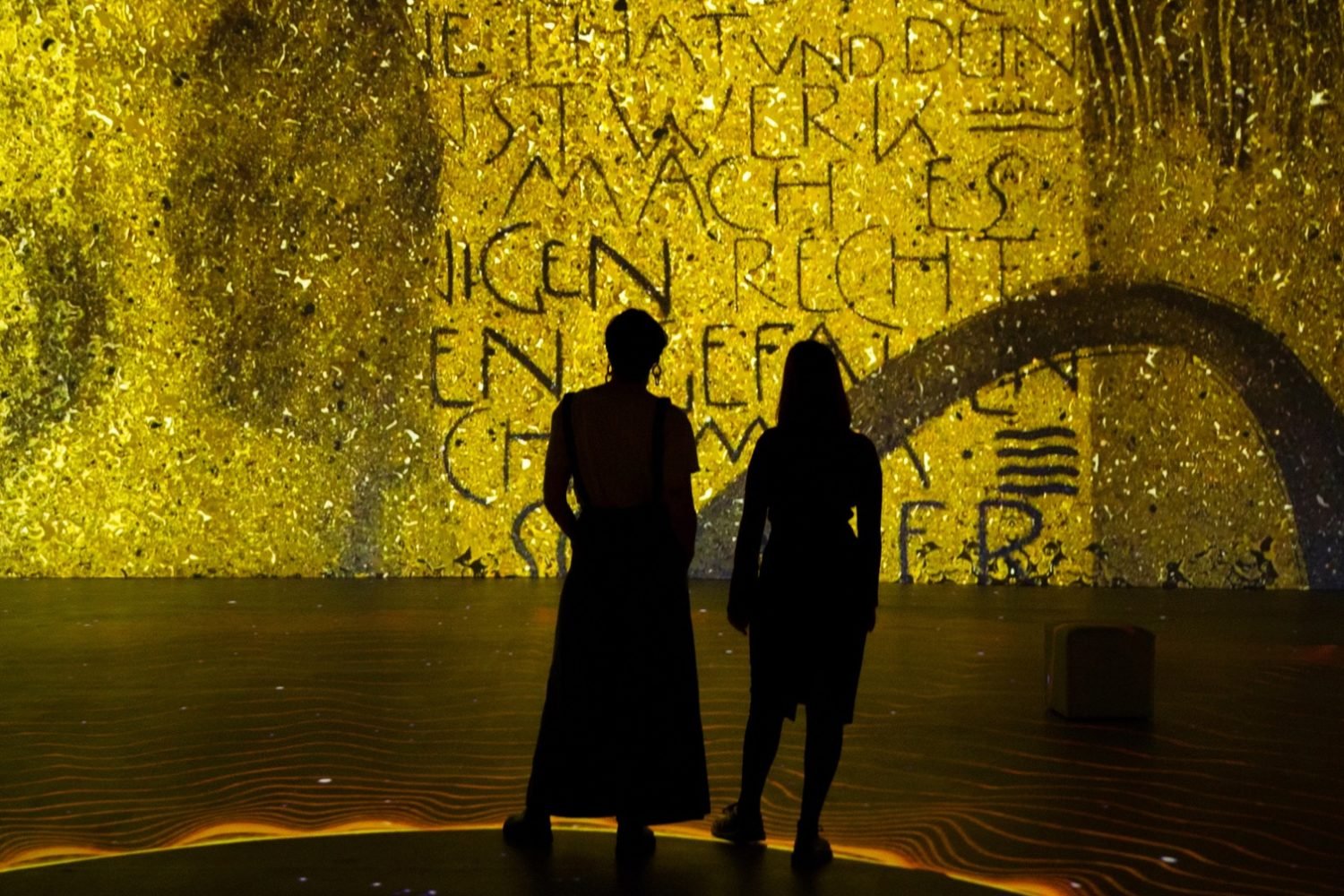Sam Gilliam, the renowned painter best known for his association with the Washington Color School, will take over the second floor of the Hirshhorn Museum in spring 2022. The show will be the first major American retrospective exhibit of Gilliam’s work in 15 years.
Senior curator Evelyn Hankins is currently working closely with Gilliam to decide what will go in the exhibit and has recently been spending time with him in his DC studio to work on specifics (this show presents a rare opportunity to put together a retrospective for a major artist who is accessible by a short Metro ride.) “It’s wonderful to be working with an artist in town,” Hankins says. “When you organize a show like this, it’s constant conversations.”
Born in Missouri in 1933, Gilliam moved to DC in 1962 and became affiliated with the Washington Color School, a loosely affiliated group of abstract painters. “It’s my goal to kind of wrench him away from that and situate him in both a national and international context,” Hankins says. “I think there’s a real dialogue with an international array of artists, not just the Washington scene.”
Gilliam’s career spans more than five decades and is difficult to categorize. In the ’60s and ’70s, he broke ground by making abstract paintings that looked like sculptures. He cut, crushed, folded and draped vividly colored canvases and hung them on gallery walls in inventive ways. His beveled-edge paintings “redefined the relationship between the painting and the wall,” Hankins says.
At 86 years old, Gilliam is currently experiencing a late-career Renaissance, with major solo exhibitions in Europe and acquisitions by MoMA and the Metropolitan Museum of Art. In 2016, Gilliam unveiled a 28-foot commissioned work for the Smithsonian’s National Museum of African American History and Culture—one of the most high-profile commissions of his career. Prices for his works in the commercial market continue to climb.
Despite his rise to international fame, Gilliam’s local roots are strong. He works in his DC studio every day, and his work is all over the city, from museums to the Takoma Metro station. His knowledge of the DC art scene, both then and now, is encyclopedic, Hankins says.
The Hirshhorn exhibit will take the seven works by Gilliam in its permanent collections as its starting point. “Light Depth” (1969), a huge work that will feature prominently in the exhibit, demonstrates Gilliam’s signature draping technique: the canvases resemble technicolor laundry hung on a clothesline. This exhibit provides “an opportunity to get people to become more familiar with the entire breadth of Sam’s practice,” Hankins says. “It is at once really diverse and very consistent. He seems to be approaching the same question in lots of different ways.”
The show will also include “Ruby Light,” a 1972 acrylic-on-canvas that resembles a four-point flower. “Rail” (1977), another painting in the Hirshhorn’s collections, comes from Gilliam’s lesser-known Black Paintings. Unlike the neons typically associated with him, these paintings use mostly black colors—well, sort of. “When you see them, they are actually full of so many colors,” says Hankins. “It’s indescribable. It’s really about exploring the full spectrum within the context of this single hue.”

